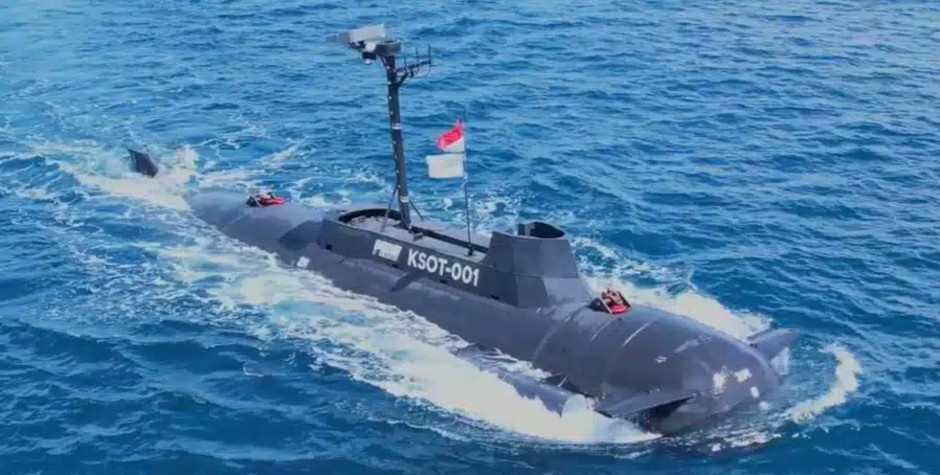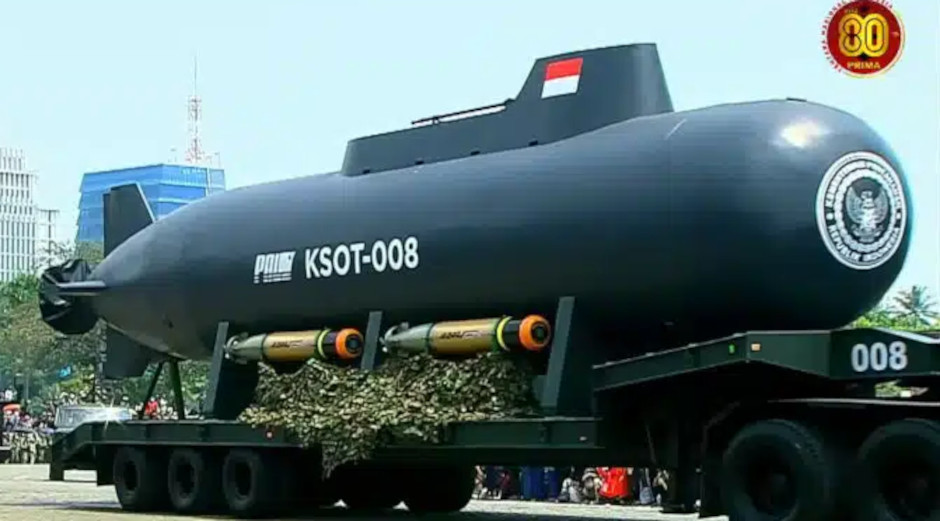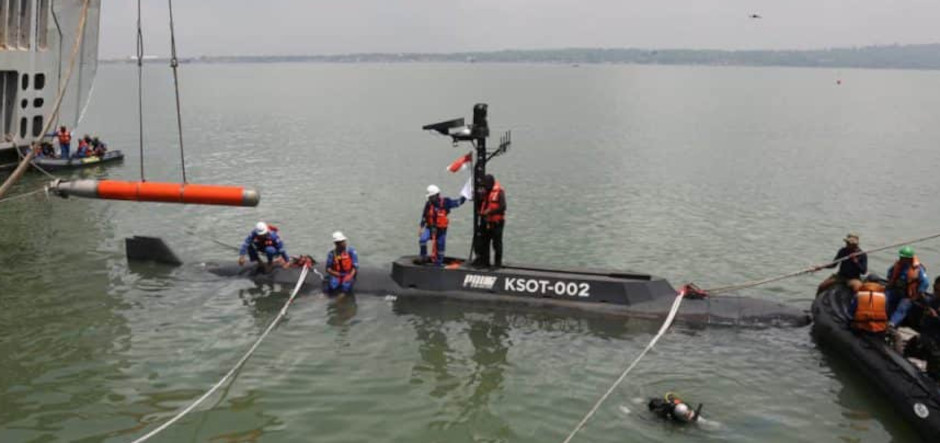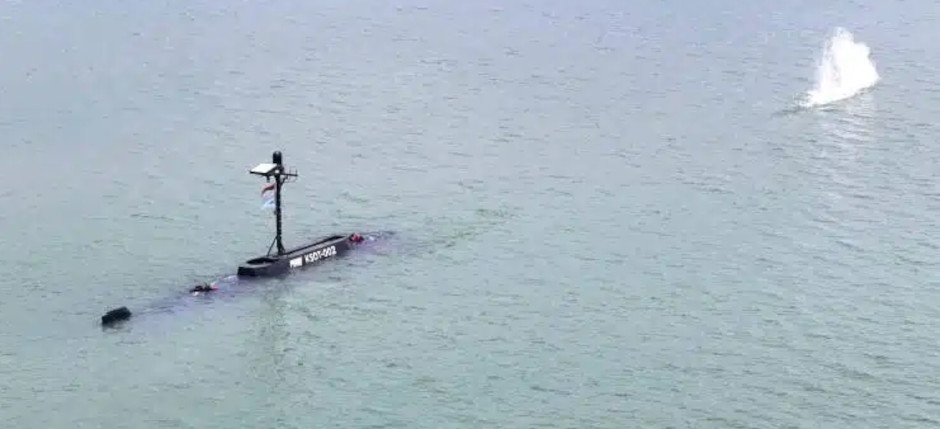![]()
![]()
![]()
(Full index of popular Covert Shores articles)
Indonesia Gets Ahead Of Western Navies In Weaponising Underwater Drones
 Indonesia has a patchy record of naval acquisitions. It is, sadly, known for accidents and tragedy rather than might. The stealth trimaran missile boat KRI Klewang was destroyed by fire in 2012, and the Type-209 submarine KRI Nanggala was lost with all hands in 2021. Meanwhile its homegrown efforts at self-sufficiency have been mired by Heath Robinson amateurism (admirable in its own right but not serious military capabilities) and blatant knockoffs of imported designs. But there are signs that this is changing.
Indonesia has a patchy record of naval acquisitions. It is, sadly, known for accidents and tragedy rather than might. The stealth trimaran missile boat KRI Klewang was destroyed by fire in 2012, and the Type-209 submarine KRI Nanggala was lost with all hands in 2021. Meanwhile its homegrown efforts at self-sufficiency have been mired by Heath Robinson amateurism (admirable in its own right but not serious military capabilities) and blatant knockoffs of imported designs. But there are signs that this is changing.

Indonesia has done something which puts it ahead of Western navies in the weaponisation of emerging technologies. Something so sensible, so obvious, that there really is no excuse in the West. Indonesia has mounted torpedoes on its prototype extra-large uncrewed underwater vehicle (XLUUV).
The KSOT (Kapal Selam Otonom), built by PT PAL, has been in the works for some years. Early concepts were very ambitious. The form we see today was first revealed at the Indodefence 2025 defence show in June. It was subsequently shown at the Indonesian National Armed Forces (TNI) 80th Anniversary Parade on October 5 in Jakarta, and conducted its first torpedo test launch on October 30. It displaces 37.5 tonnes, is 15 meters long with a beam of 2.2 meters. Reported performance is up to 8 knots surfaced, 20 knots submerged (max), and a range of 6,000 nautical miles, and can operate at 350 meters depth. Alternative specification claim that it can be controlled at ranges of only 200 miles. Caution is needed with all these specifications, especially speed and range, but the vehicle is generally credible.

An early KSOT concept shared at a defence show in 2022 was much more ambitious.

The first prototype, KSOT-001. Note the torpedo tube jusy visible on the waterline.
The carriage of standoff weapons transforms the KSOT XLUUV into a potent anti-ship platform. Indonesia has vast sovereign waters which straddle vital sea lanes of communication (SLOC) and numerous natural choke points. These include the Malacca Strait, Sundra Strait, Lombok Strait, Massaka Strait, and Karimata Strait. This accident of geography places Indonesia near the centre of any major war in Asia, even if it tries to remain neutral. Its waters are a strategic arena. This is amply demonstrated by China who have been conducting unauthorised surveys there, presumably to test the water for submarine operations.

The 8th prototype, KSOT-008, at the Indonesian National Armed Forces (TNI) 80th Anniversary Parade in Jakarta on October 5 2025. Note the more rounded 'sail' fairing on the casing. The forward hydroplanes are absent, but it is not clear whether this is the finished configuration.
The test launch involved the indigenous 324 mm ‘Piranha’ torpedo. Lightweight torpedoes are normally associated with anti-submarine use but can be effective against ships provided they have suitable guidance and fusing. North Korean and Swedish lightweight torpedoes bear testament to this. The XLUUV could logically carry heavyweight torpedoes too which can pack a much larger punch, threatening to sink even larger vessels. There is an obvious market opportunity for relatively cheap, short ranged but large warhead anti-ship torpedoes.


First torpedo launch. Conducting the trial from semi-submerged is not unusual.
The mast of the KSOT is fitted with a square antenna, possibly for Starlink. This would allow a person in the loop attack, shortcutting the practical challenges of fully autonomous detection and launch. The XLUUV will only have limited passive sonar, but still much better situational awareness than WW2 submarines which sunk thousands of tons of shipping.
It remains to be seen whether Indonesia can translate this groundbreaking test into an operational capability. But the common sense of this approach is clear.
Related articles (Full index of popular Covert Shores articles)

 Indonesia's KSM-32 Midget Submarine
Indonesia's KSM-32 Midget Submarine

 Chinese Sea Wing UUV (Glider)
Chinese Sea Wing UUV (Glider)

 Iranian XLUUV
Iranian XLUUV

 Naval Group's XLUUV Demonstrator
Naval Group's XLUUV Demonstrator
